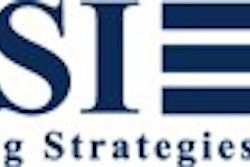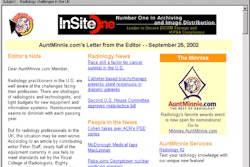NEW ORLEANS - Meeting the divergent demands of modern-day healthcare is a daunting task for radiology administrators. There are increases in demands for services, declining reimbursement for procedures, and a shrinking pool of staff to perform exams. As a result, getting the most of available resources is critical to a facility’s success.
Performance metrics are a suite of tools that savvy managers can use to optimize business practices, identify areas of improvement, and assess the fiscal health of a company. In a presentation at the American Healthcare Radiology Administrators annual meeting, Mel Allen of Siemens Medical Solutions in Mission, KS, outlined several steps that administrators can use to take the pulse of their practice.
"In the complete workflow, only two endpoints matter: the report delivered to the referring physician, and the bill issued and the money collected," he said.
Allen advocates an integrated workflow approach to maximize the benefits possible with quantifying performance metrics.
"Classic workflow and performance analysis monitors and measures productivity on a task-by-task basis. The reality, however, is that tasks overlap, and so each is synergistic with another," he said.
There are six key performance metrics for radiology that Allen identified for administrators to track:
- Patient satisfaction -- short waiting times, knowledge of exam procedure, and ease of scheduling.
- Referring-physician satisfaction -- patient satisfaction, capability to schedule exams, timeliness of reports, and accessibility to the radiologist.
- Report turnaround time.
- Quality -- overreads and repeat rates.
- Productivity -- worked hours per procedure or relative value unit (RVU) per modality.
- Financial -- cost per exam and revenue per exam.
An administrator should compare a facility’s metrics to best-demonstrated practice benchmarks, Allen said. The benchmarks are available from radiology consulting firms, professional societies and journals, and to members of group purchasing organizations.
"It’s important to note that benchmarking and metrics all need to be qualified because each facility is different and unique in its approach to practice," he said.
For example, an optimal benchmark number for asset capacity, such as CT, would be 100%. In the real world, 80% is a good utilization number, he said.
Once metrics have been obtained, the information should be shared with physicians and staff. Allen has found that presenting the data will often result in process and productivity improvements on the next measurement period as staff will take it upon themselves to address areas of less-than-optimal performance.
Metrics can also help an imaging group plan for future needs. By identifying the top ten procedures by modality, a firm can focus the upkeep and enhancements to the modality. For instance, if the top referrers for MR procedures were by neurologists, then upgrading head coils would be a wise investment choice.
Allen cautioned that managers should not review data in isolation from other performed measurements.
"Always look at your metrics in combination with one another," he said. "There really are a number of factors that interact. For example, if labor costs for a modality suddenly went up, it could be because the number of exams performed during overtime hours increased. In which case you have a staffing and utilization challenge, not a performance issue."
By Jonathan S. Batchelor
AuntMinnie.com staff writer
July 29, 2002
Related Reading
Revenue optimization, compliance assurance provide practice Rx, July 15, 2002
SCAR R&D Committee releases RT productivity study, May 5,
CR and DR cross swords in RT productivity debate, May 3, 2002
Workflow engineering essential for PACS implementation, May 2, 2002
Speech recognition speeds reporting at Vienna hospital, May 3, 2002
Web weaves improvements in the business of radiology, July 26, 2001
Copyright © 2002 AuntMinnie.com



















